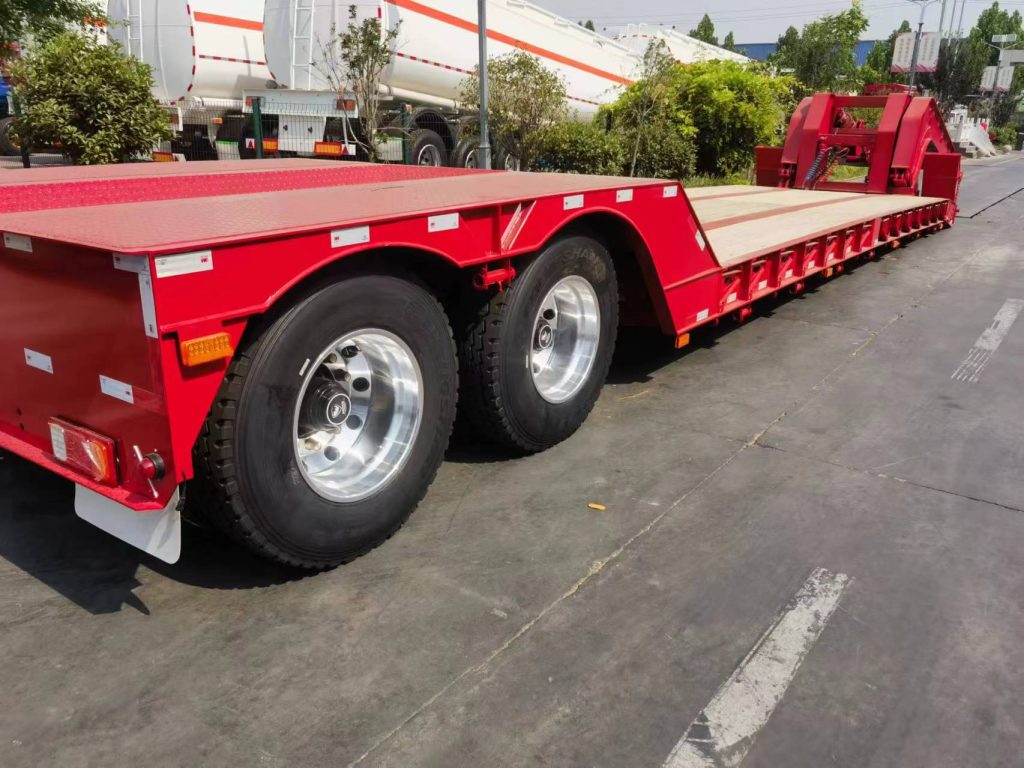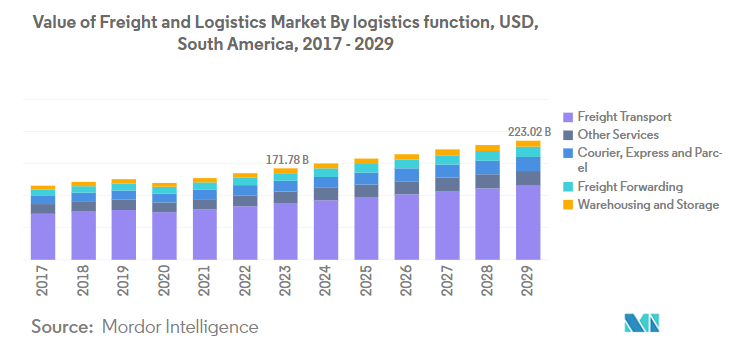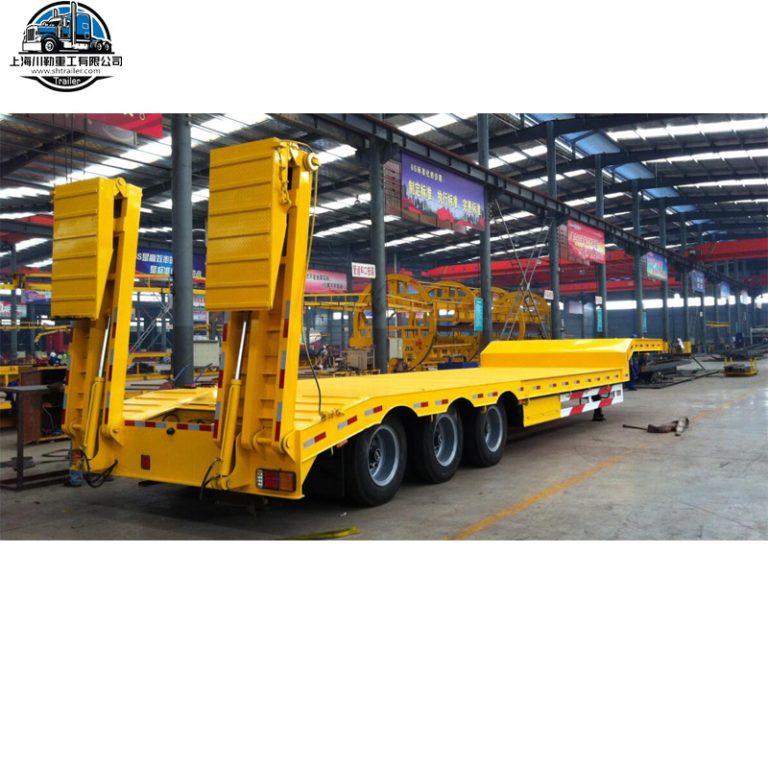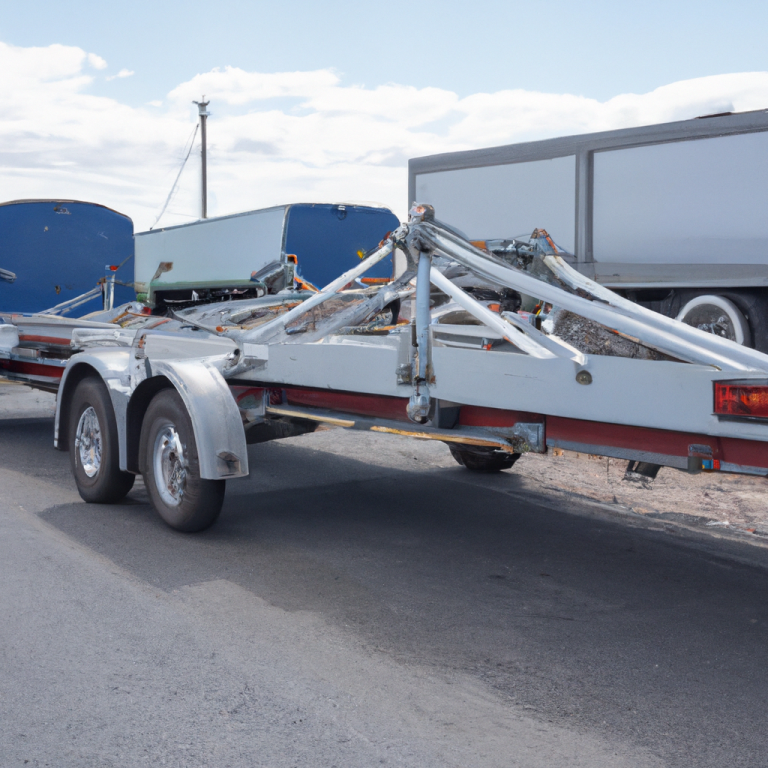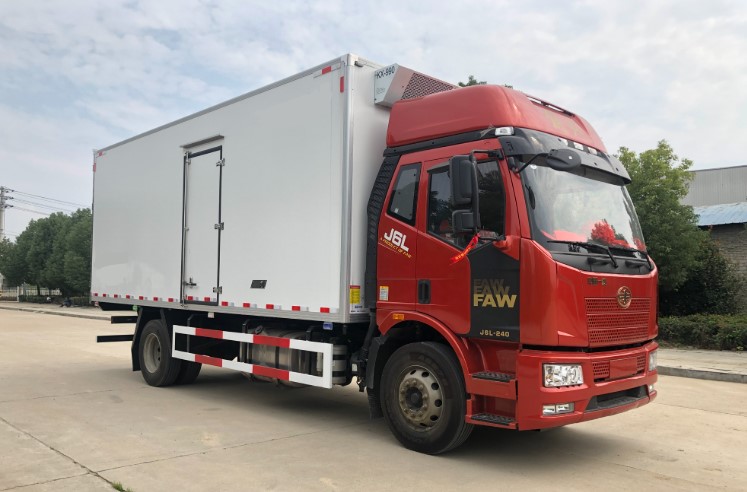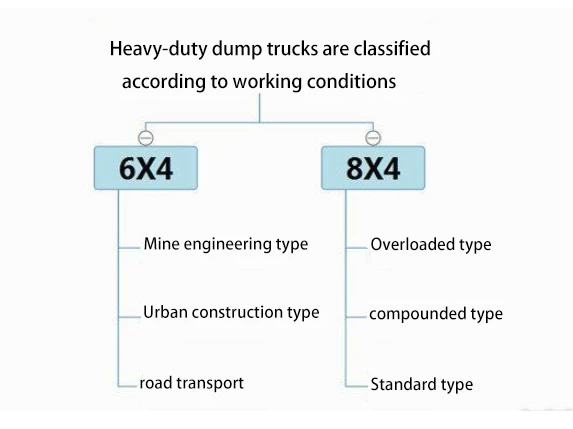Lowboy trailers come in various types, each designed to meet specific transportation needs. Here are some of the most common types of lowboy trailers:
1. Fixed Gooseneck (FGN) Lowboy Trailers
- Features: These trailers have a fixed gooseneck that is not detachable. The gooseneck can be adjusted to make loading from the rear easier.
- Advantages: Lightweight and simpler design, making them easier to maneuver and maintain.
- Disadvantages: Limited flexibility in loading, as items can only be loaded from the rear.
2. Fixed-Neck Lowboy Trailers
- Features: The neck of the trailer is fixed and cannot be detached.
- Advantages: Lightweight compared to other types, making them easier to handle.
- Disadvantages: More challenging to load items from the front.
3. Removable Gooseneck (RGN) Lowboy Trailers
- Features: The gooseneck can be detached, allowing for front loading. These trailers can have either mechanically detachable or hydraulically detachable goosenecks.
- Advantages: Highly versatile, allowing for loading from the front, back, and sides. Suitable for very heavy and oversized loads.
- Disadvantages: More complex and generally more expensive due to the detachable mechanism.
4. Hydraulic Detachable Gooseneck Lowboy Trailers
- Features: The gooseneck is detached using a hydraulic system, making it easier to adjust the height of the trailer.
- Advantages: Easier to operate and more flexible in terms of loading and unloading.
- Disadvantages: Requires more maintenance due to the hydraulic system.
5. Mechanical Detachable Gooseneck Lowboy Trailers
- Features: The gooseneck is detached mechanically, without the need for a hydraulic system.
- Advantages: Lighter and requires less maintenance compared to hydraulic systems.
- Disadvantages: Less convenient to operate compared to hydraulic detachable goosenecks.
6. Extendable Lowboy Trailers
- Features: These trailers can be extended to accommodate longer loads.
- Advantages: Ideal for transporting long items such as wind turbine blades, lumber, and utility poles.
- Disadvantages: More complex design and potentially higher cost.
7. Lowboy Trailers with Air Ride Suspension
- Features: Equipped with an air ride suspension system.
- Advantages: Provides a smoother ride, reducing the risk of damage to the cargo.
- Disadvantages: More expensive and requires more maintenance compared to spring ride suspension.
8. Lowboy Trailers with Spring Ride Suspension
- Features: Uses a spring ride suspension system.
- Advantages: More economical and simpler design.
- Disadvantages: Rougher ride compared to air ride suspension, which may not be suitable for delicate cargo.
9. Jeep Dolly Lowboy Trailers
- Features: A shorter Lowboy Trailer designed to divide the kingpin load between the trailer and the tractor.
- Advantages: Provides adequate length between axle groups to meet DOT bridge regulations.
- Disadvantages: Limited in terms of the types of cargo that can be transported.
10. Paver Special Lowboy Trailers
- Features: Designed with greater flexibility for loading and unloading equipment such as pavers, milling machines, and rollers.
- Advantages: Specialized design for specific types of construction equipment.
- Disadvantages: Limited to specific types of cargo.
11. Double Drop Lowboy Trailers
- Features: Features a double drop design with a lower central deck.
- Advantages: Can carry taller loads with a lower center of gravity, offering increased stability during transport.
- Disadvantages: More complex design and potentially higher cost.
Each type of lowboy trailer has its own set of advantages and disadvantages, making them suitable for different types of cargo and transportation needs. When choosing a lowboy trailer, it’s essential to consider the specific requirements of the cargo to ensure safe and efficient transport.
